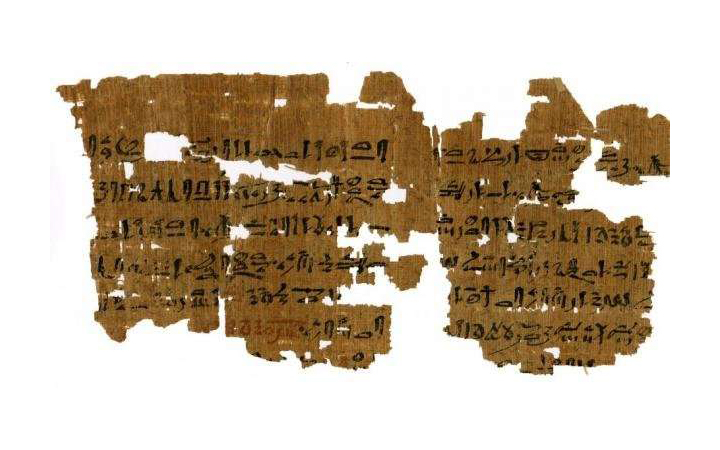Egyptian Papyrus Reveals Rare Details of Ancient Medical Practices

Ancient manuscripts that were previously untranslated have revealed a rare and fascinating glimpse of scientific and medical practices in Egypt thousands of years ago.
Experts working with the texts recently discovered that the papyrus scrolls included the oldest known medical discussion of the kidneys, as well as notes on treatments for eye diseases and a description of a pregnancy test, the science news site ScienceNordic reported.
The manuscripts are part of the Papyrus Carlsberg Collection, housed at the University of Copenhagen in Denmark, where an international team of researchers is collaborating to interpret the unpublished documents, according to the project website. [10 of the Most Mysterious Ancient Manuscripts]
Along with medical information, the documents contain references to astronomy, botany and astrology, researchers told ScienceNordic.
The extensive Papyrus Carlsberg Collection includes approximately 1,400 manuscripts, most of which date from 2000 B.C. to A.D. 1000, collection manager Kim Ryholt, a professor with the Department of Cross-Cultural and Regional Studies at the University of Copenhagen, wrote on the Carlsberg Foundation website. Most of this ancient Egyptian scientific literature has remained untranslated since its donation to the university in 1939, according to the collection's website.
One of the recently translated medical texts outlined a pregnancy test that directed a pregnant woman to pee into two bags — one containing wheat and one holding barley, ScienceNordic reported. According to the papyrus, the sex of the child would be determined by which grain sprouted first — and if neither sprouted, then the test was negative.
While this pregnancy test may sound unusual by modern standards, a similar test was referenced in a medieval German text from 1699, project researcher Sofie Schiødt, a doctoral candidate in the Department of Cross-Cultural and Regional Studies at the University of Copenhagen, told ScienceNordic.
Get the world’s most fascinating discoveries delivered straight to your inbox.
"Many of the ideas in the medical texts from ancient Egypt appear again in later Greek and Roman texts," Schiødt said. "From here, they spread further to the medieval medical texts in the Middle East, and you can find traces all the way up to premodern medicine."
Scientific papyri from ancient Egypt are scarce, and the translation of these texts will provide valuable insight into the foundations of science and medicine in the ancient world, researchers told ScienceNordic.
Original article on Live Science.

Mindy Weisberger is a science journalist and author of "Rise of the Zombie Bugs: The Surprising Science of Parasitic Mind-Control" (Hopkins Press). She formerly edited for Scholastic and was a channel editor and senior writer for Live Science. She has reported on general science, covering climate change, paleontology, biology and space. Mindy studied film at Columbia University; prior to LS, she produced, wrote and directed media for the American Museum of Natural History in NYC. Her videos about dinosaurs, astrophysics, biodiversity and evolution appear in museums and science centers worldwide, earning awards such as the CINE Golden Eagle and the Communicator Award of Excellence. Her writing has also appeared in Scientific American, The Washington Post, How It Works Magazine and CNN.


